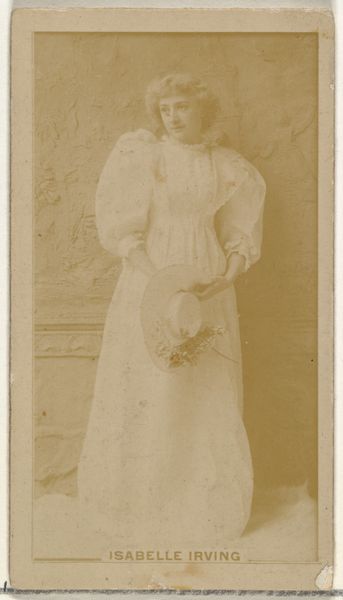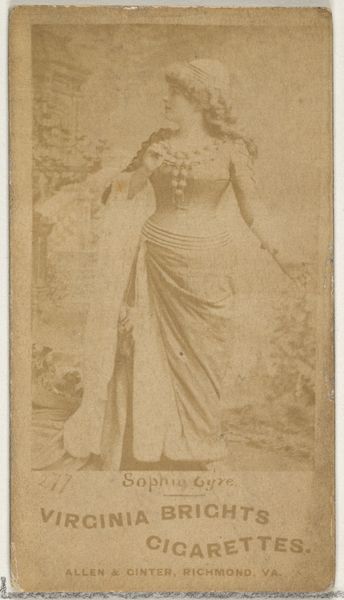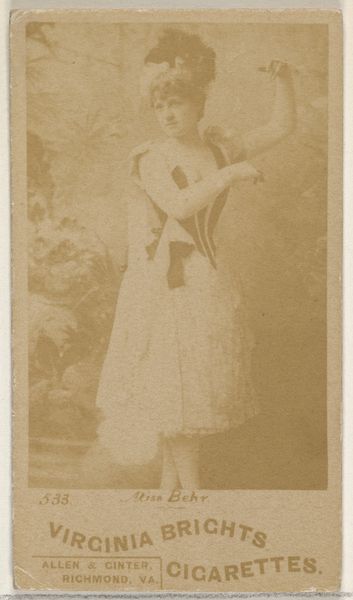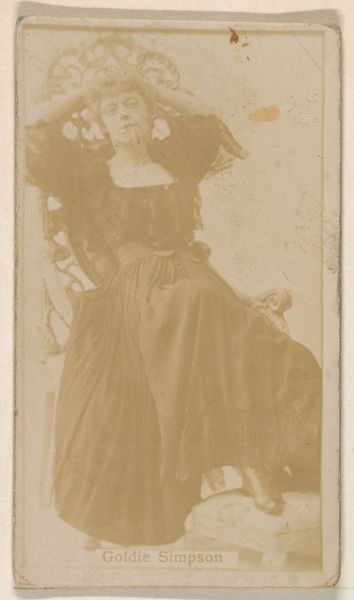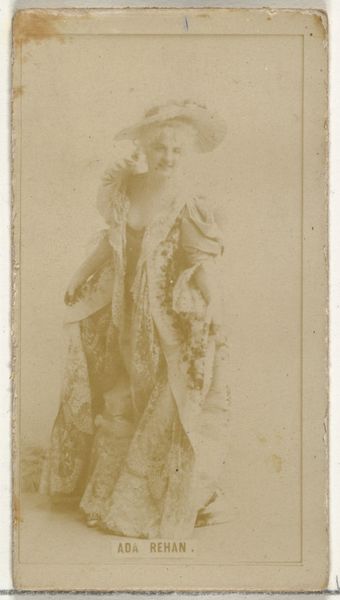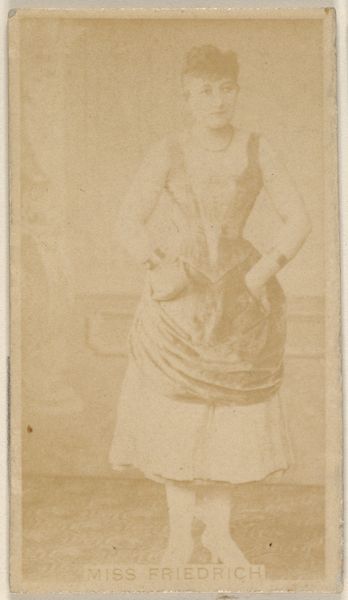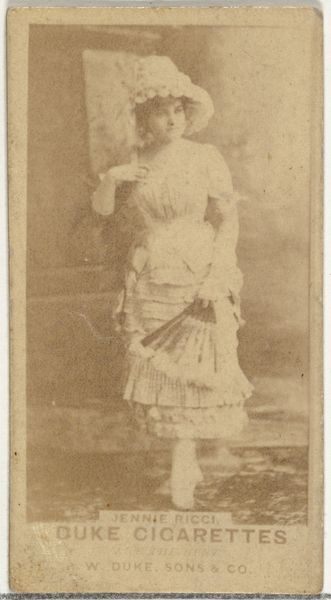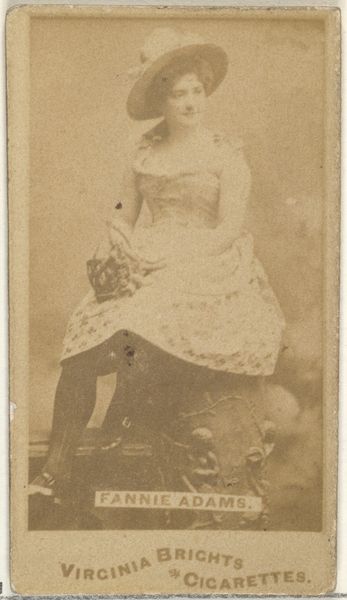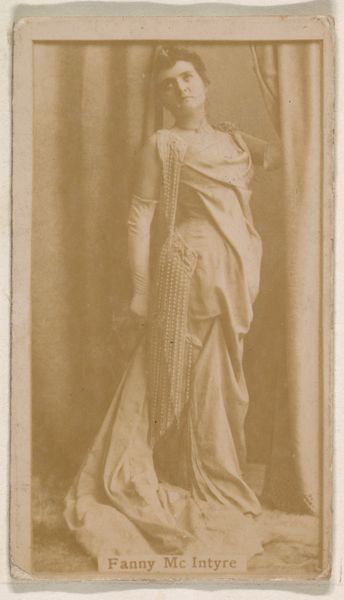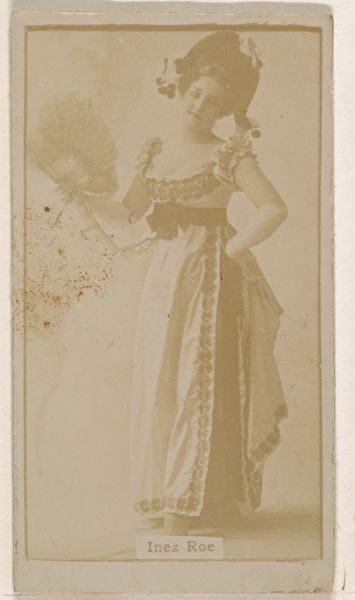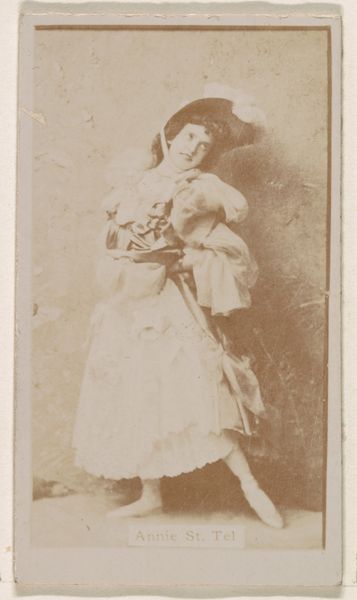
Bertha Cameron, from the Actors and Actresses series (N145-8) issued by Duke Sons & Co. to promote Duke Cigarettes 1890 - 1895
0:00
0:00
print, photography
#
portrait
# print
#
photography
Dimensions: Sheet: 2 11/16 × 1 3/8 in. (6.8 × 3.5 cm)
Copyright: Public Domain
Editor: This is "Bertha Cameron," a photographic print from the Actors and Actresses series, dating from the 1890s, by W. Duke, Sons & Co. The image feels very posed and constructed. It's also undeniably romantic with its frills and delicate tones. What strikes you about it? Curator: What grabs me is how this image operates as a piece of advertising doubling as a cultural artifact. It’s so telling of the Gilded Age’s obsession with celebrity and the nascent consumer culture, isn’t it? Editor: Definitely. I was focusing more on the image itself as a representation of feminine beauty. Curator: And it *is* that, but the actress's beauty is strategically deployed. Duke Cigarettes used these images to create aspirational associations with their product. They are leveraging Bertha Cameron's status to sell cigarettes to, potentially, a very gendered audience. Have you considered how this intertwines capitalism and image making? It presents a certain ideal, yes, but what socioeconomic messages are subtly embedded? Editor: I hadn’t really considered it like that. So, it’s less about artistic expression and more about…persuasion? Curator: Exactly! The goal is persuasion, through idealization. Think about who was being represented – predominantly white, upper-class women – and who was excluded. Editor: I see. It presents a very selective image of femininity and reinforces social hierarchies of the time through exclusion. Curator: Precisely. Understanding the historical and cultural context reframes how we perceive even seemingly simple images like this one. Editor: I’ll definitely look at these kinds of portraits differently now! Thank you for that context. Curator: My pleasure. Always consider whose stories are being told – and whose are being omitted. That's where the real analysis begins.
Comments
No comments
Be the first to comment and join the conversation on the ultimate creative platform.

